上海市城市化生态过程与生态恢复重点实验室拟组织学术交流活动,诚邀相关研究领域老师和同学参加并交流讨论。报告人及报告内容简介如下:
报告题目:Modelling the fate of 14C-pharmaceuticals during activated sludge process(活性污泥过程中药物分子的行为和建模)
时间:2013年9月24日(周二)上午9:00
地点:闵行校区生命科学楼辅楼208会议室
报告人:耿春
报告人简介:
耿春,法国国家农业研究所和中科院城市环境研究所博士后,高级工程师。研究方向:1)抗生素环境行为和建模;2)土壤、地下水调查、风险评估和修复。主持国家自然科学基金、上海市自然科学基金、环保公益项目、博士后基金等,参与973、863、基金委国际合作重大等项目;参加过世博会、迪斯尼、广兰路地铁站等场地的调查、风评评估和修复。是Plant and soil、Environment International 同行审稿人。在chemosphere、Annals of Botany、Plant and soil等发表英文文章11篇,3篇在投稿。
报告摘要:
In the present study, 14C-labelled technology was used to investigate the fate of two pharmaceuticals during activated sludge process at environmentally relevant concentrations. Behaviors of pharmaceuticals are strongly dependent on the types of compound. 4-acetamidophenol (ACM) decreased in the aqueous and solid phases with time, and had higher a volatile potential, indicating that volatilization is the main dissipation pathway and it should not be persistent in liquid sludge. However, sulfamethoxazole (SMX) decreased in the aqueous phase with time, but increased in the solid phase, and had lower potentials for volatilization and mineralization, indicating that adsorption, not biodegradation, should be the main dissipation pathway and it would be persistent. For both molecules, physicochemical adsorption could remove some pharmaceuticals from the aqueous phase, but adsorption was accelerated by microorganism in the sludge, which was less bioavailable by chemical sequential extraction. The fate of SMX and ACM is well depicted by the kinetic model, simultaneously predicting the behavior in the gas, aqueous and solid phases. Therefore, ACM can be easily removed by stripping into air, while SMX cannot be efficiently removed from the aqueous or the solid phases, and may lead to the development of antibiotic resistant bacteria and genes in the environment after discharge.




